“It must be naive, simple, easy, cheerful, merry, and as illusory and beautiful as a child’s daydream…”
– Konstantin Stanislavsky on The Blue Bird by Maurice Maeterlinck
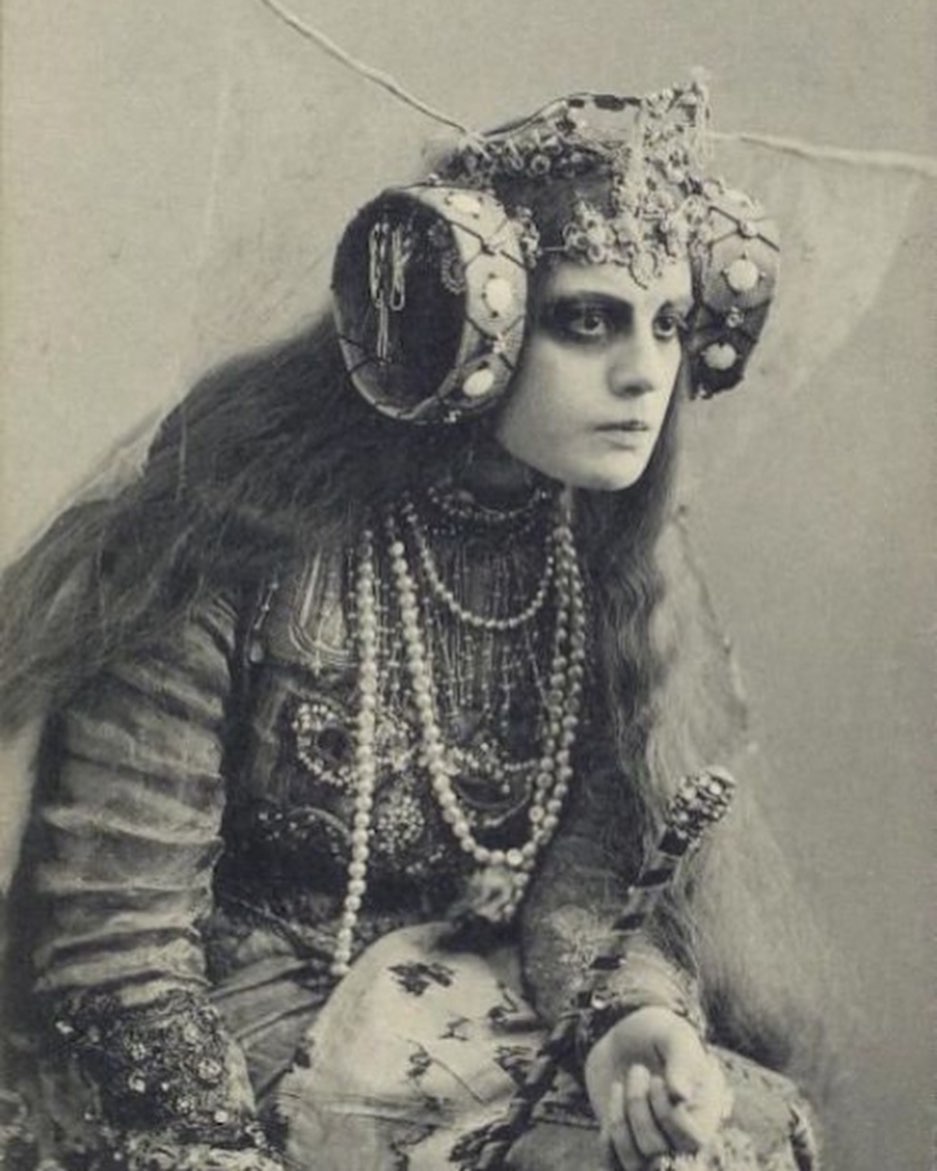
Maria Germanova as The Witch in The Blue Bird
These photographs are of actors in their costumes for Konstanin Stanislavski’s production of Belgian playwright and poet Maurice Maeterlinck’s The Blue Bird (L’Oiseau bleu) at the Moscow Arts Theatre in 1908.
Written in 1907, The Blue Bird premiered in Russia on September 30, 1908.
The story begins one night, when a boy named Tyltyl (Alexander Tairov) and a girl named Mytyl (Alisa Koonen) are visited by the good fairy Berylune. The fairy’s granddaughter is ill. Only the Blue Bird can help and make her happy.
They talk about beauty, and the fairy shows the children how to see the souls of objects. Things like water, fire, milk, bread, sugar and night are transformed into living creatures with personalities of their own.
They unlikely team then embark on a journey in search of the magical blue bird of happiness.

Novoselsky as ‘Elm Tree’
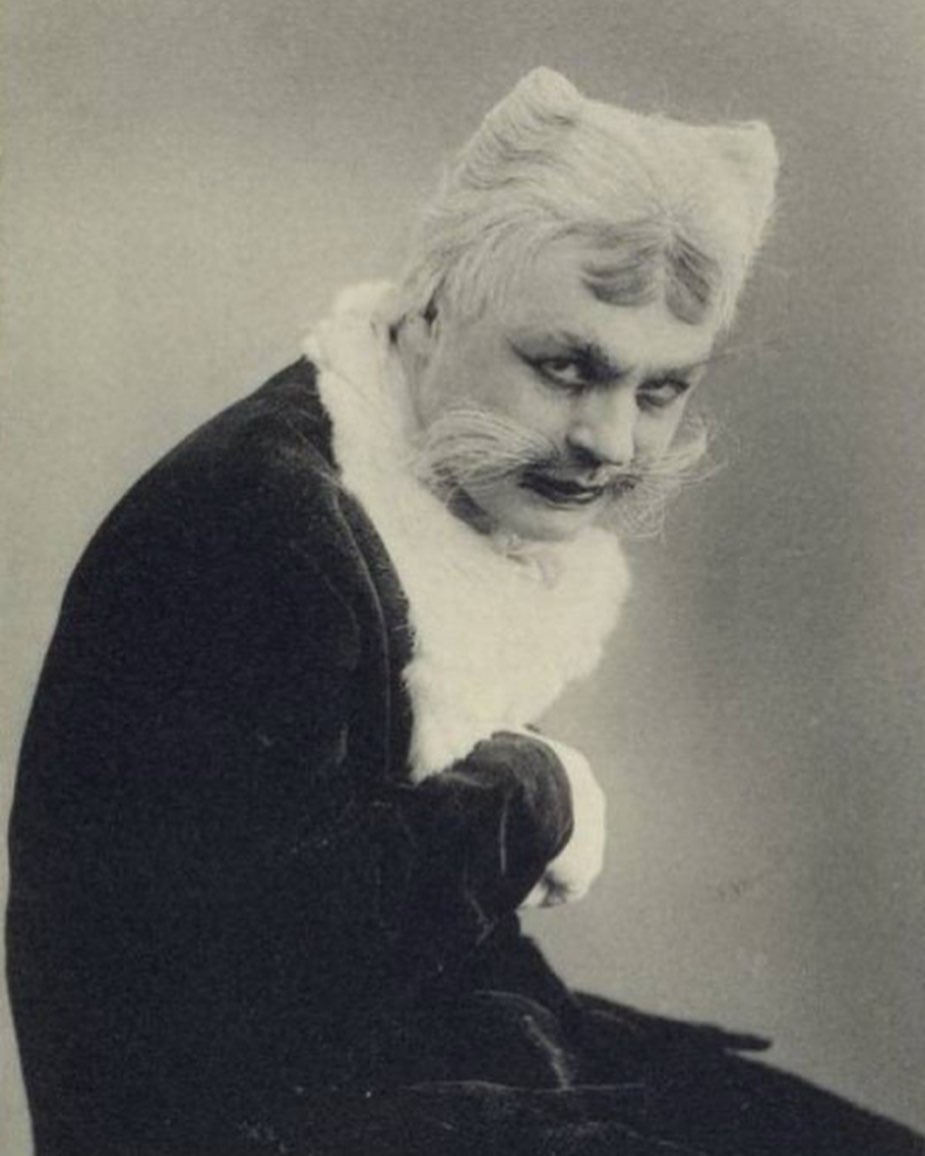
Stepan Leonidovich Kuznetsov. as the Cat
“… For me as a director, the most important aspect is the stage direction, but it doesn’t have to be implemented verbatim. He [Maeterlinck] may be a brilliant writer, but he’s no good at costumes, set design, and stage mechanics.”
Konstantin Stanislavsky
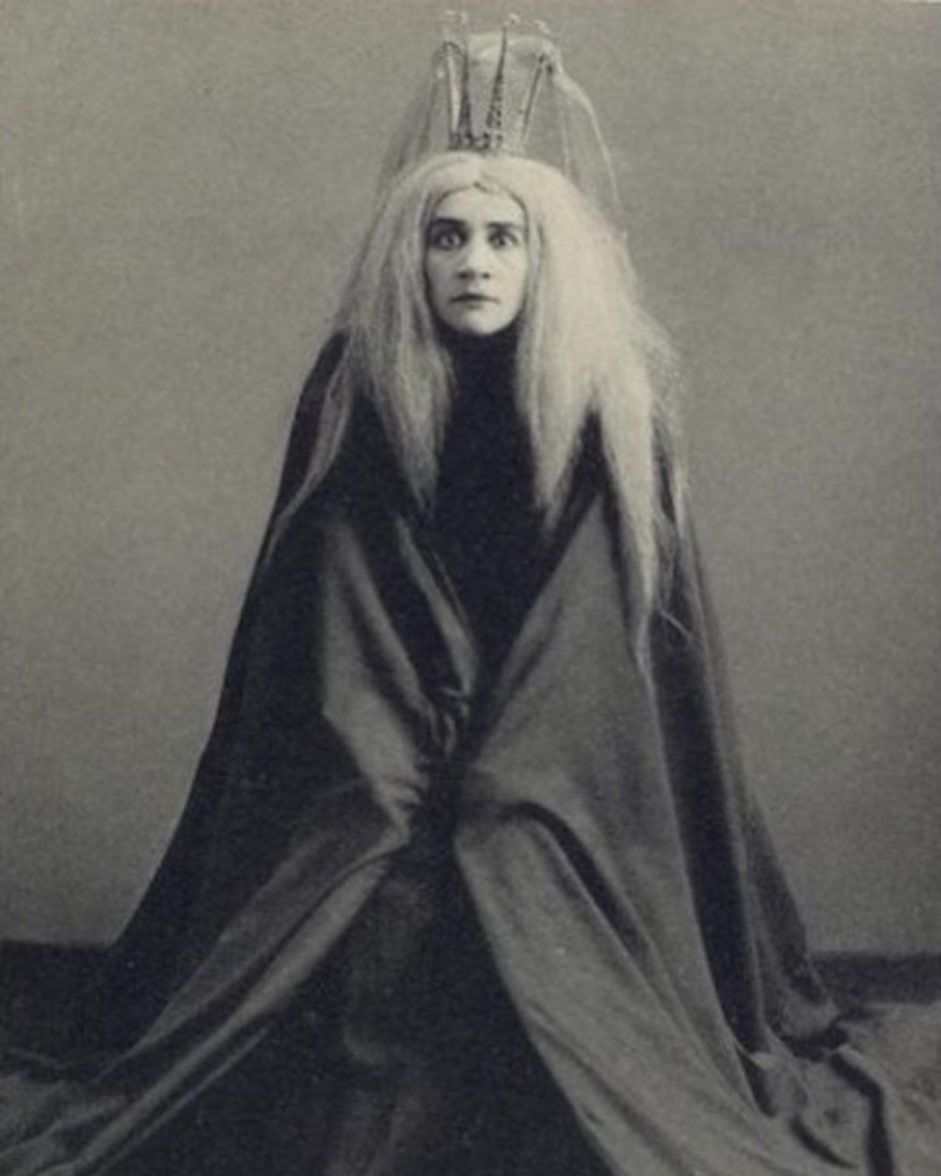
Yelena Muratova as Night.
Maeterlinck noted what each character should look like:
COSTUMES
TYLTYL wears the dress of Hop o’ my Thumb in Perrault’s Tales. Scarlet knickerbockers, pale-blue jacket, white stockings, tan shoes.
MYTYL is dressed like Gretel or Little Red Riding-hood.
LIGHT.—The “moon-coloured” dress in Perrault’s Peau d’âne; that is to say, pale gold shot with silver, shimmering gauzes, forming a sort of rays, etc. Neo-Grecian or Anglo-Grecian (à la Walter Crane) or even more or less Empire style: a high waist, bare arms, etc. Head-dress: a sort of diadem or even a light crown.
THE FAIRY BÉRYLUNE and NEIGHBOUR BERLINGOT.—The traditional dress of the poor women in fairy-tales. If desired, the transformation of the Fairy into a princess in Act I may be omitted.
DADDY TYL, MUMMY TYL, GAFFER TYL and GRANNY TYL.—The traditional costume of the German wood-cutters and peasants in Grimm’s Tales.
TYLTYL’S BROTHERS AND SISTERS.—Different forms of the Hop-o’-my-Thumb costume.
TIME.—Traditional dress of Time: a wide black or dark-blue cloak, a streaming white beard, scythe and hour-glass.
NIGHT.—Ample black garments, covered with mysterious stars and “shot” with reddish-brown reflections. Veils, dark poppies, etc.
THE NEIGHBOUR’S LITTLE GIRL.—Bright fair hair; a long white frock.
THE DOG,—Red dress-coat, white breeches, top-boots, a shiny hat. The costume suggests that of John Bull.
THE CAT.—The costume of Puss In Boots: powdered wig, three-cornered hat, violet or sky-blue coat, dress-sword, etc.
N.B.—The heads of the DOG and the CAT should be only discreetly animalised.
THE LUXURIES.—Before the transformation: wide, heavy mantles in red and yellow brocade; enormous fat jewels, etc. After the transformation: chocolate or coffee-coloured tights, giving the impression of unadorned dancing-jacks.
THE HAPPINESSES OF THE HOME.—Dresses of various colours, or, if preferred, costumes of peasants, shepherds, wood-cutters and so on, but idealised and interpreted fairy-fashion.
THE GREAT JOYS.—As stated in the text, shimmering dresses in soft and subtle shades: rose-awakening, water’s-smile, amber-dew, blue-of-dawn, etc.
MATERNAL LOVE.—Dress very similar to the dress worn by Light, that is to say, supple and almost transparent veils, as of a Greek statue, and, in so far as possible, white. Pearls and other stones as rich and numerous as may be desired, provided that they do not break the pure and candid harmony of the whole.
BREAD.—A rich pasha’s dress. An ample crimson silk or velvet gown. A huge turban. A scimitar. An enormous stomach, red and puffed-out cheeks.
SUGAR.—A silk gown, cut like that of a eunuch in a seraglio, half blue and half white, to suggest the paper wrapper of a sugar-loaf. Eunuch’s headdress.
FIRE.—Red tights, a vermilion cloak, with changing reflections, lined with gold. An aigrette of iridescent flames.
WATER.—A pale-blue or bluish-green dress, with transparent reflections and effects of rippling or trickling gauze, Neo-Grecian or Anglo-Grecian style. but fuller and more voluminous than that of LIGHT. Head-dress of aquatic flowers and seaweed.
THE ANIMALS.—Popular or peasant costumes.
THE TREES.—Dresses of different shades of green or the colour of the trunks of trees. Distinctive attributes in the shape of leaves or branches by which they can be recognised.
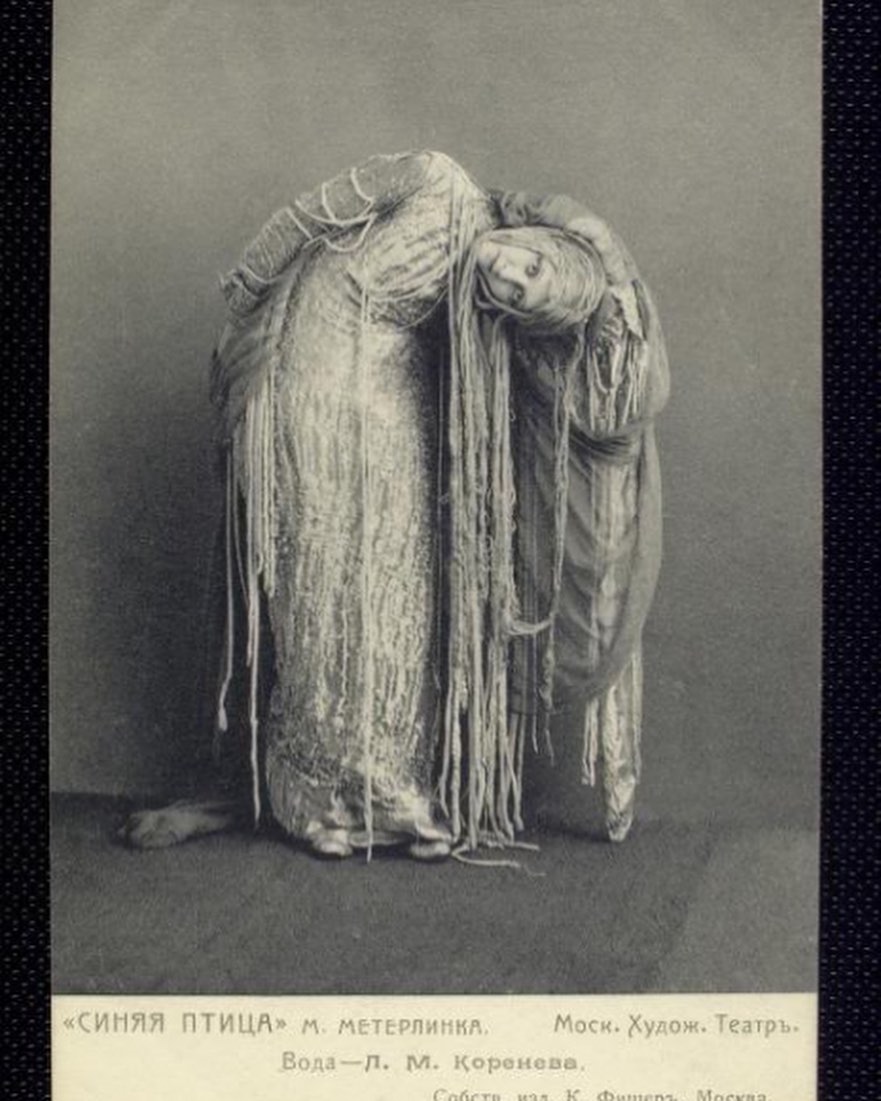
Water
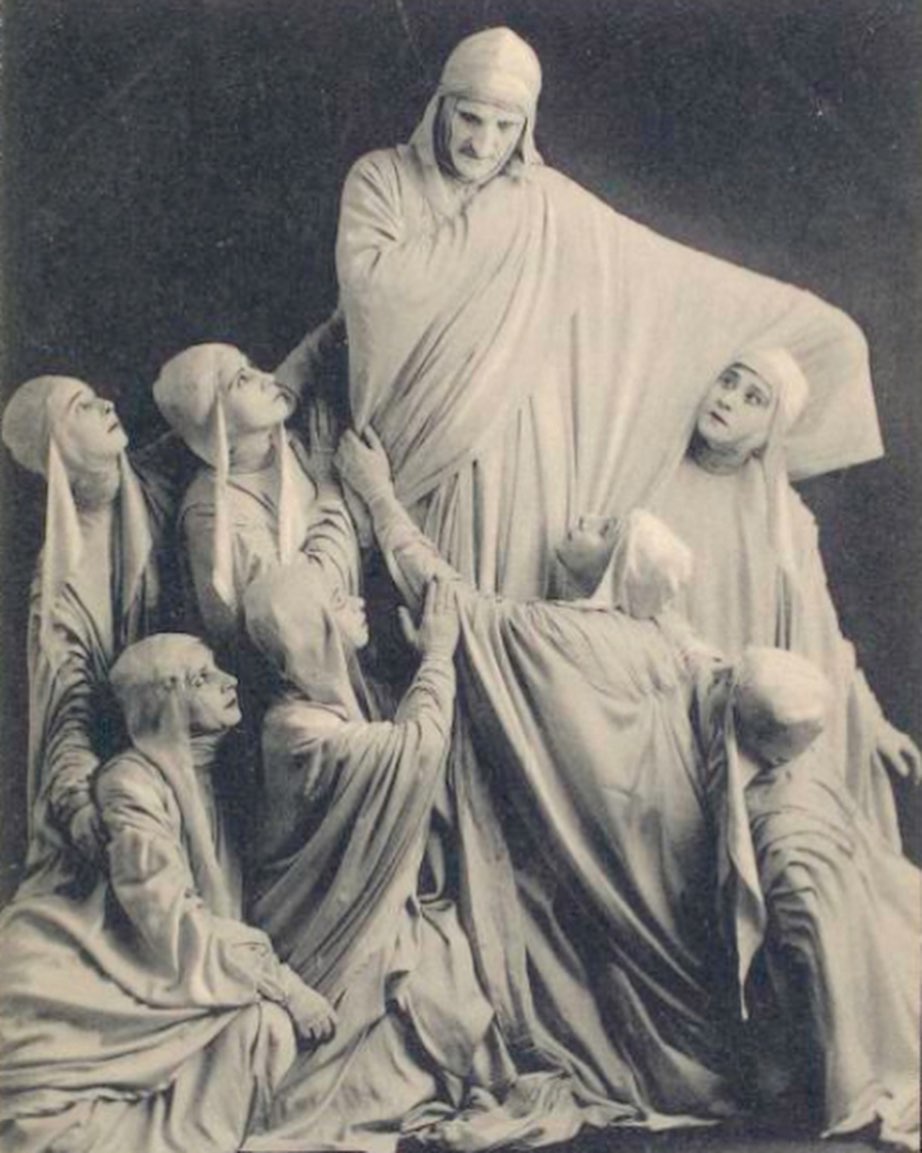
Znamensky as ‘Time ‘ with the ‘Souls of the Unborn’

I asked Stanislavsky eagerly for photographs of scenes from “The Blue Bird” or else for the original designs of the scenic artist so that I might have them copied… the photographs, I was told, were not available – except those of the players themselves – for the originals had been made by Fischer, a German, and had been destroyed in the pogrom at the beginning of the war in 1914. And in the difficult times Russia has undergone since then, no others have been made.
When I pressed my point and asked about the original designs, the firm, square but kindly face of my host carried a passing glance of embarrassed modesty and then admitted that there were no designs. He had conceived them himself and had personally directed the artist, V. E. Yevgenoff, in the execution of the settings.
The Russian Theater Under the Revolution by Oliver Sayler, 1920
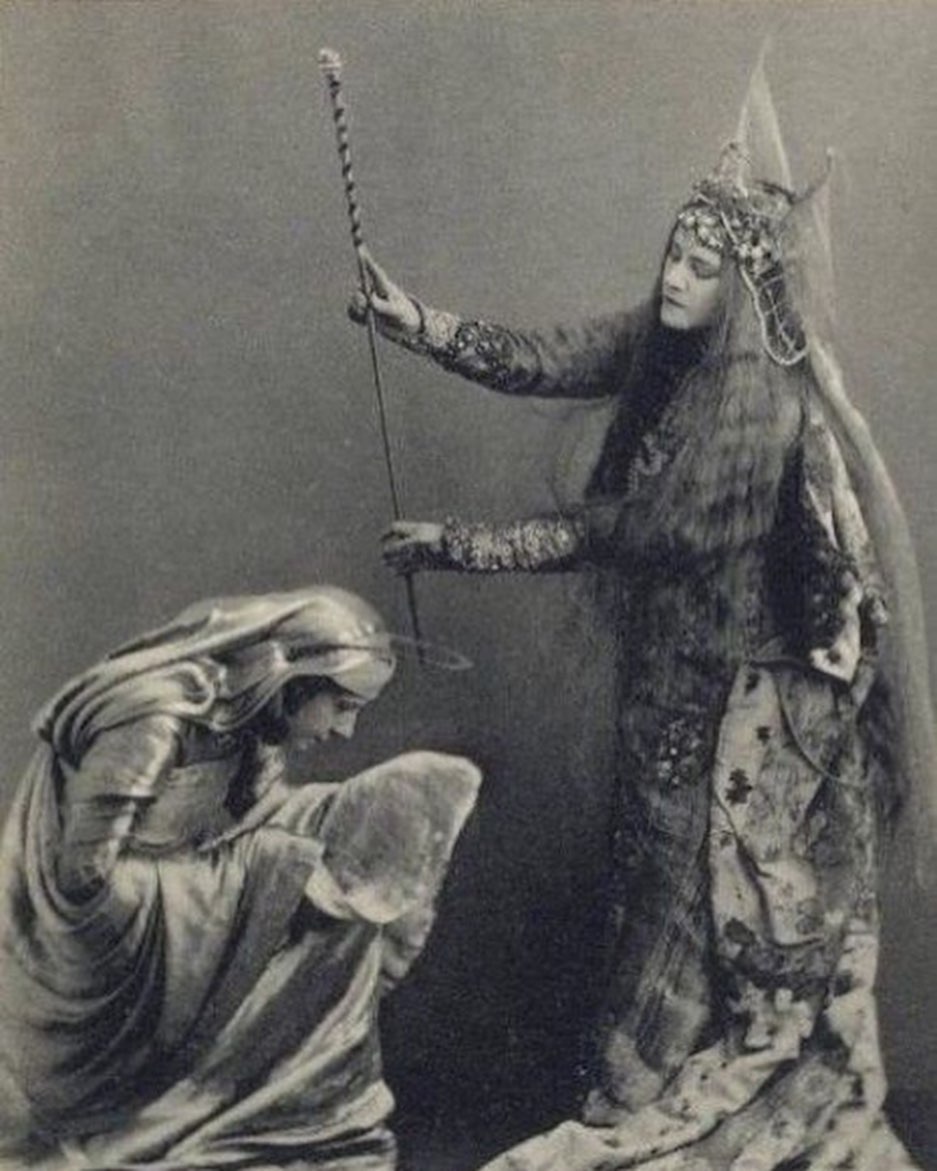
Baranovskaya as ‘Light’ & Margarita Savitskaya as the Fairy
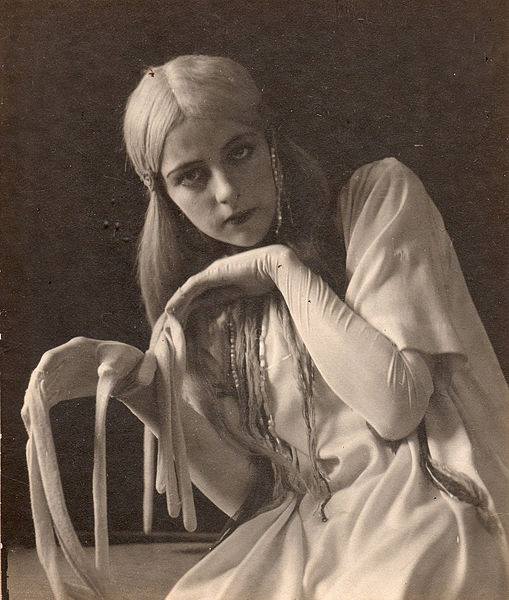
Lyubov Kosminskaya.as ‘ Milk’
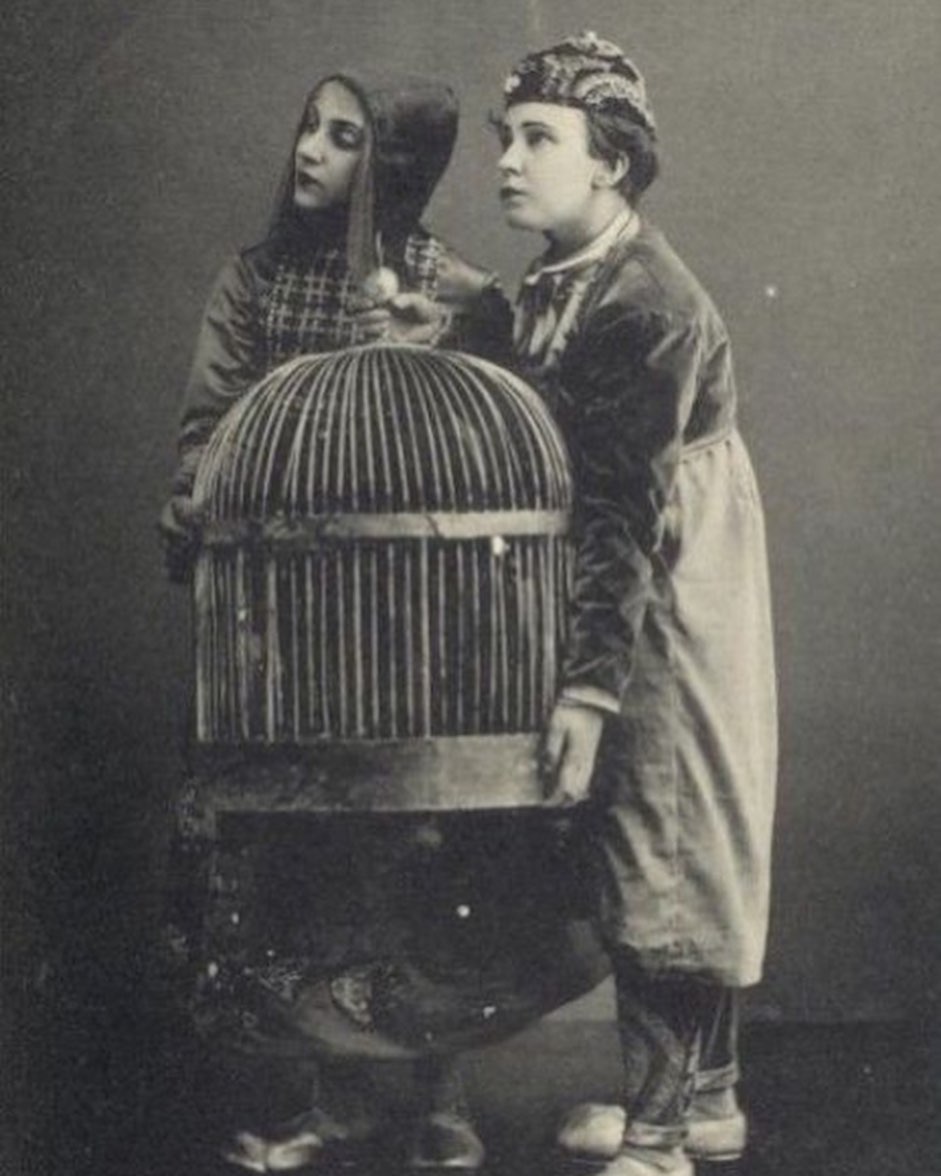
Alisa Coonen as Mytyl & Sofya Khalyutina asMytyl and Tyltyl
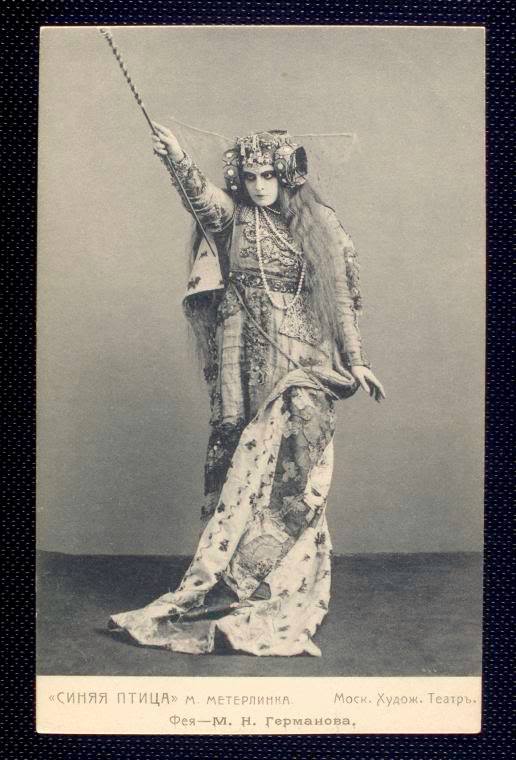
Maria Germanova as The Witch

Horse
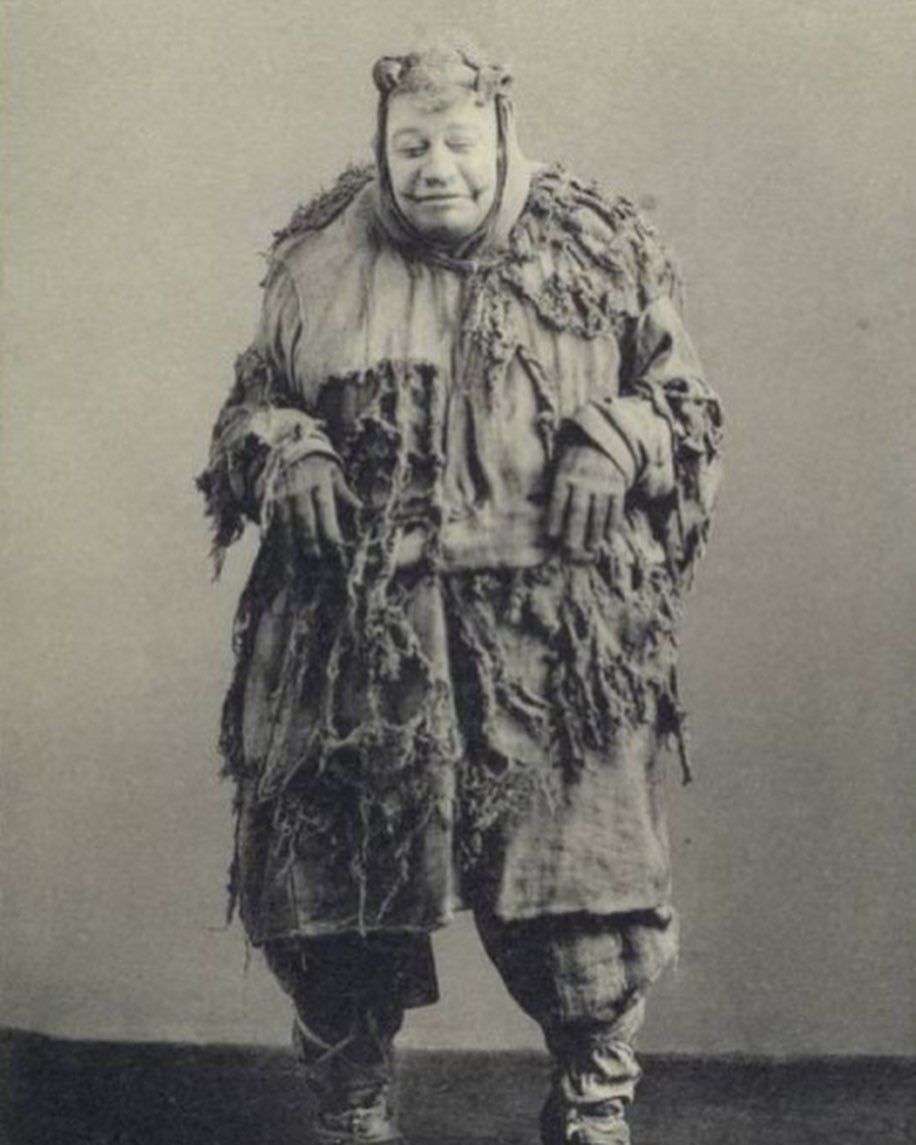
The Pig

Vladimir Boltin as Sugar, Alisa Koonen as Mytyl.
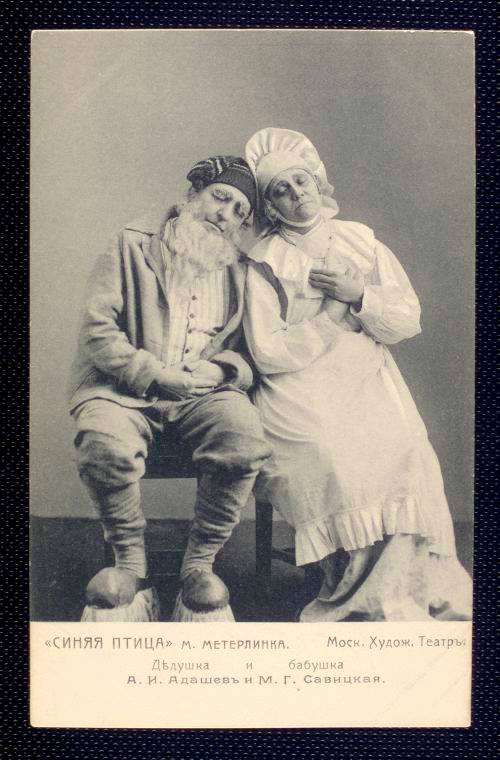
Grandmother and Grandfather
You can read the play here.
Would you like to support Flashbak?
Please consider making a donation to our site. We don't want to rely on ads to bring you the best of visual culture. You can also support us by signing up to our Mailing List. And you can also follow us on Facebook, Instagram and Twitter. For great art and culture delivered to your door, visit our shop.


